When we first saw pictures of our house, they showed a ramshackle and precarious beam and wire pergola like structure on the patio. I had seen similar structures outside other old cortijos, supporting glorious old grapevines, but none in quite such a state of disrepair. To stop the whole thing from collapsing, poles and agave stems had been propped under the wires, like very rustic clothes props under an unreliable washing line.
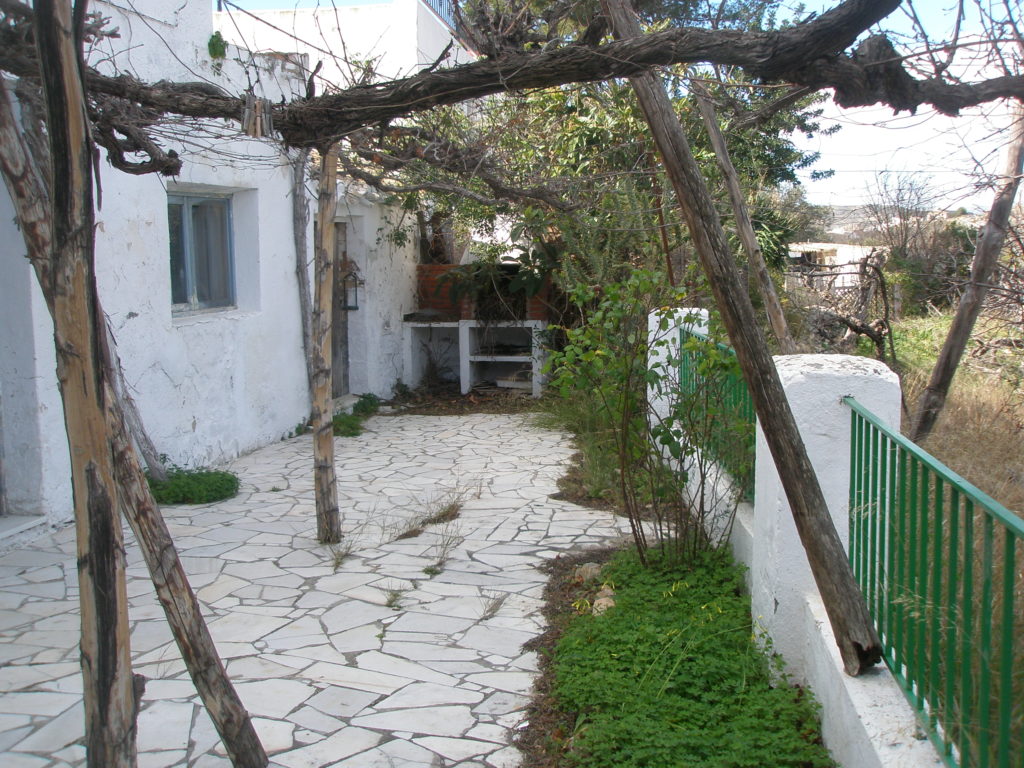
It was all a bit ramshackle
During our ‘before’ party, we had several moments when we felt that the whole thing might come crashing down. Guests who did not realise that it was held up by willpower and wishful thinking, leaned on it, or in one case, swung gaily around a pole whilst singing a jaunty song.
Of course, when the painters wanted to get at the outside walls of the house, they simply cut the wires and left us with a huge tangle of sprung cable and thinner wires to bundle up and dispose of. I guess my hopes that they might do something to stabilise it were ridiculous, but their cavalier attitude to our ‘thing of beauty’ still managed to surprise me. Silly me!
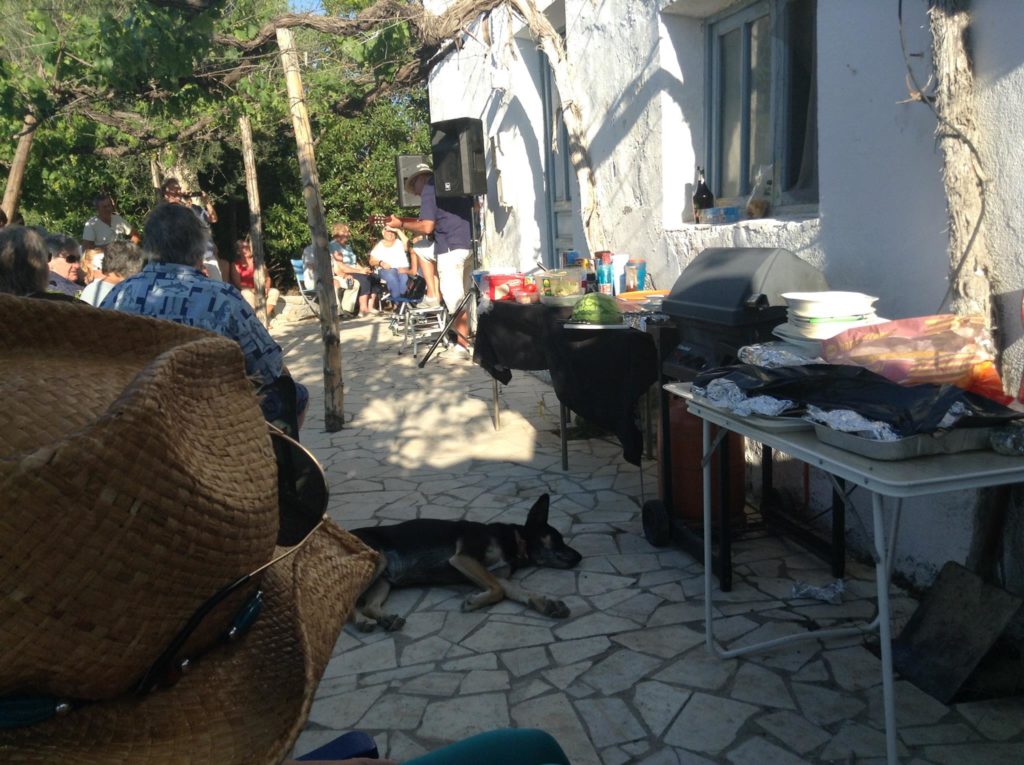
Ignorance is bliss. If they had only realised how precarious it was!
The first thing we had to do was reinstate what had been there before it fell into disrepair. This required an almost archaeological approach, as the remaining poles and wires had been rearranged to stop everything falling over, and parts of the original had completely rotted away or disappeared.
For months, we had nothing but one pole near the big olive tree on the corner of the patio. The vine grew from the stump the decorators had left and became large, droopy and completely untrained. Working on other parts of the house and land made us miss the window of opportunity in our first and second spring, but I was determined that we would get to work on it once we were past the hottest of the summer months.
Eyelets set into the wall of the house suggested that there should be one post to correspond with each of the pillars on the wall above the acequia. Tangled masses of very thick wire were anchored into the ground, suggesting that the poles would have had hefty ‘guy ropes’ to keep them stable and in place.
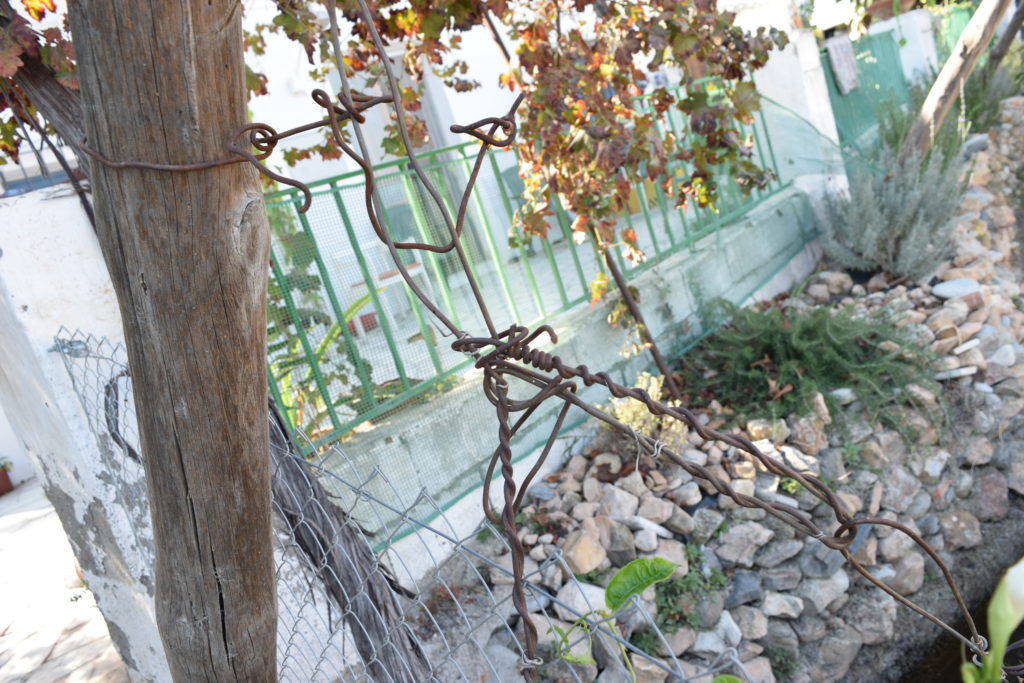
Crazy tangles of rusty wire gave clues about how things used to be
The one remaining post was slightly out of alignment, but we managed to grunt and heave it into place and lash the trunk of the vine to the olive tree to support the extra weight when the grapes grew.
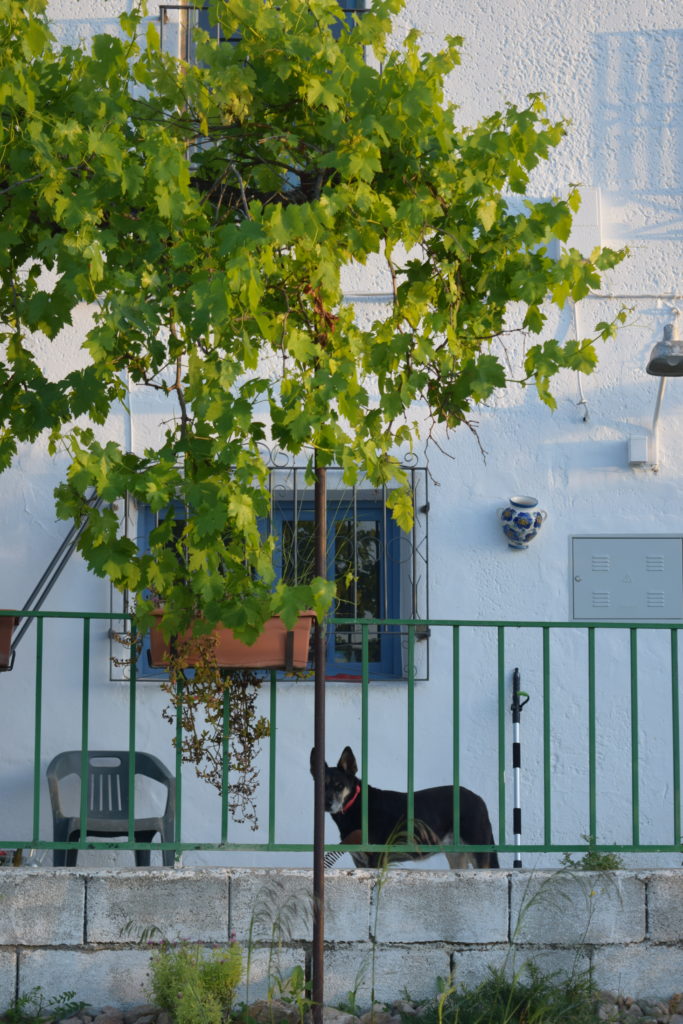
Luxuriant, but completely chaotic. (Observe the state of the wall!
The grapes came and went (a useless crop in any case) and it was time to brave the civil engineering work.
We had saved the roof beams that were no longer considered safe to support the roof of the house, so we just had to cut them to length and find some way of lashing them to the columns for support while we attached a new system of wires. The fact that there was a drop below the patio into the acequia was a problem. The crumbling state of the wall and columns meant we could not climb on them.
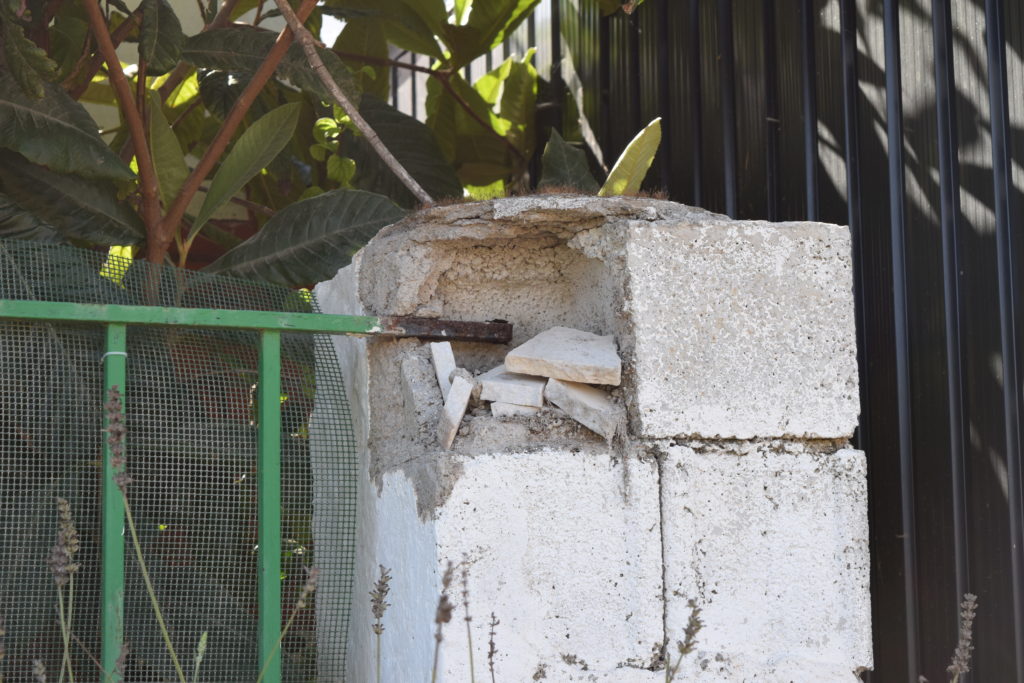
You know you have to get a beam wired up quickly when the column it is lashed to starts to fall apart!
Flower beds containing roses and cacti got in the way of the ladder when we were on the patio and working from the garden meant we had to find flat places to plant the ladder, hampered by trees, weeds and more roses. The walls of the acequia are very weak, so standing on them to reach anything was risky and worrying. It was all very experimental and at times a somewhat hair-raising experience, but eventually we had the four beams roughly in place.

Geoff stands among the rose bushes, deciding where to fix the next wire. The acequia is just to his right, below the dry stone wall.
We then had to create a more robust system of wires anchored to the old anchor points and the olive tree, making sure that there was enough tension, but not so much that a beam started swinging wildly and threatening to brain us before we could attach the wire pulling the opposite way. It took some time and a great deal of wrestling with materials whilst wielding hefty wrenches and wire-working tools, but at last I was able to walk off down the garden to take a photograph of all four poles in place, for the first time in many years.
Of course, the large beams were very important, but only part of the story. We had held them up with very heavy duty fence straining wire and steel cable, which should stand up to most of what the elements can throw at them. We now needed to lace between them with less heavy duty wire. I decided to go for galvanised number twelve wire every four hundred millimetres along the length of the house and to weave between them with number four wire, which was easier to work with.
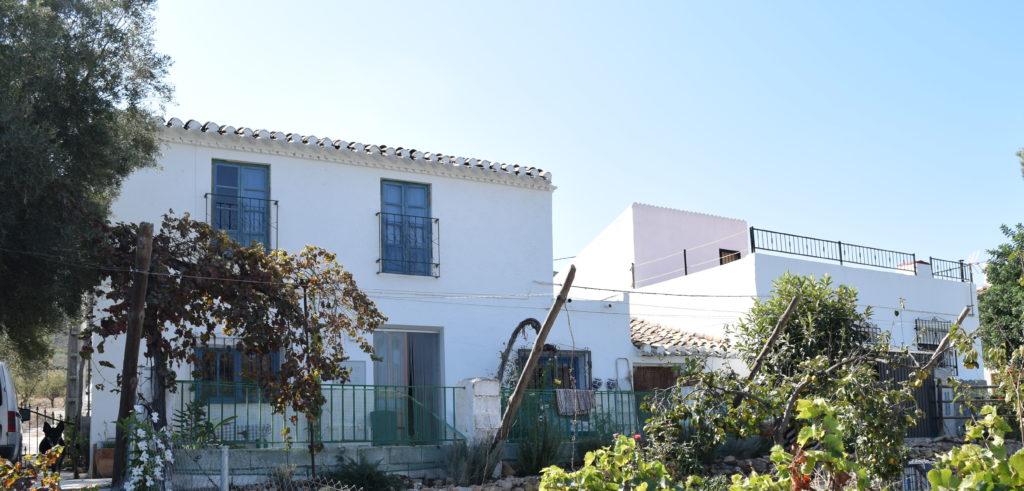
It is beginning to look like a proper old farmhouse 🙂
It sounds so easy when you read it in one sentence, but the patio is not a straightforward rectangle. Equal spacings were not feasible, so I had to set things up roughly, then decide where the discrepancies could be best hidden. The knock on effects of moving one wire would soon start to manifest themselves.
As each wire was repositioned, I had to go around tweaking virtually every junction and tie-in point to make sure that everything was still tensioned nice and neatly. This involved either moving and climbing up the ladder over and over again, or swiping at the wires with a rake handle. As there are two hundred and nine of these intersections, this took a lot of time and gave me a crick in the neck, as well as aggravating my dodgy ankle.
It took several days of climbing up and down the stepladder, fighting with wire that was determined to get tied in knots and working at uncomfortable heights with tools in both hands and the sun often right in my eyes.
It was worth it.

Finally, we have a more or less authentic set up for our grapes and ornamental climbers to cover.
We have lost a couple of vines that did not survive the building work and subsequent trauma, but as we still have plenty elsewhere, we have planted some decorative climbers to fill in any patches the two remaining vines dont cover. It may take a couple of seasons to really come into its own, but we hope that once it is established, we shall have a pleasant, shady patio to sit on in the summer, sipping a cool drink and admiring the view.

